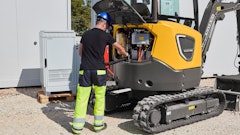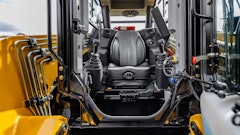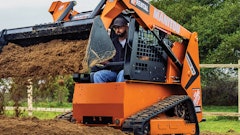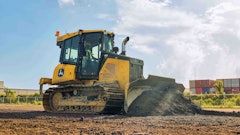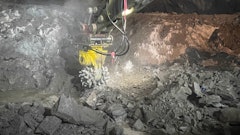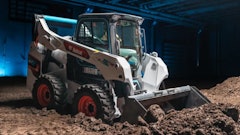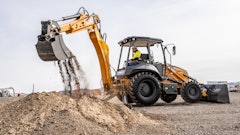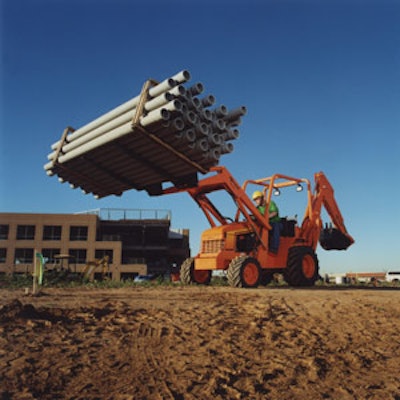
Although backhoe-loaders in the 14-ft. dig depth and above size class have long been regarded as essential tools on commercial construction sites, their smaller counterparts (12-ft. dig depth and below) have generally been perceived as too lightweight for such use. Yet, this mind set is starting to change.
"Years back, there were a few... tractor-loader-backhoes (TLBs), especially in the compact class, that were almost considered 'toys'," says Doug Dahlgren, product manager, Allmand Bros. "They were better than a shovel, but frankly not a lot.
"What's happened over the last few years is that they've really become... a serious piece of construction equipment," he states. "We raised the level of performance on the machines to make them more appropriate for a contractor."
Consequently, even the smallest of compact models (10-ft. dig depth or less) are finding use in a much wider range of applications.
"Years ago, the machines were used in more 'surgical' type applications. They were used for very small projects for opening up a hole, very light digging operations, very light backfill operations," says Bud Martin, sales manager, Terramite. "Now that they have become more powerful - with better breakout on both the front and the back end, better lift capacity, better carrying capacity - there's really nothing out there that I see these machines are excluded from. They are able to do just about any operation that a full-size backhoe will do."
Packing in performance
A primary reason behind this shift is the added power being packed into the machines. Compact TLBs have seen significant gains in engine output. "They're now up into the 30- to 40-hp class," says Martin. "Before, they used to be limited to the 20-hp class."
And 12-ft. models hover right around the 60-hp mark, putting them nearly on par with the smallest 14-ft. backhoe-loaders.
Coupled with this higher horsepower are increases in hydraulic flow capacities. "Years ago, you had 5 or 6 gpm; now everybody is at about 8 to 10 gpm," Martin points out. "That opens the door to a broader range of [attachments] that are compatible with the machine."
Many models are also available with quick couplers and auxiliary hydraulics, enabling them to utilize attachments such as breakers and 4-in-1 buckets. "Basically, they have all of the options available that you have on the larger machines," says Martin.
The advances in hydraulics extend beyond attachment capabilities. Consider Yanmar's CBL40, which has a variable-displacement piston pump hydraulic system. This feature provides the ability to combine functions (boom, swing, arm, bucket) for simultaneous operations. The unit also includes HMT (Hydro-Mechanical Transmission), a blend of hydrostatic and mechanical transmission technology.
Hydraulic self-leveling loader control valves and a backhoe "creep" mode are featured on Kubota's TLB models. "Hydraulic self-leveling loader control valves improve pallet fork work, and are easily shut off... for loader work," says Keith Rohrbacker, product manager, Construction Equipment, Loader/Landscaper Tractors, Kubota Tractor Corp. "The backhoe crawling mode allows the operator to move the machine along the trench - in either direction - while at the backhoe controls, saving time and money while repositioning down a long trench." Dedicated boom swing pumps further speed the trenching process.
These and other features are enabling smaller TLBs to tackle a wider range of job sizes and types, including utility installations, footings, general excavation, material handling and other tasks once requiring the capabilities of full-size machines.
"Almost all of the features of the larger machines have been incorporated into the compact TLBs," Martin points out. "The OEMs have worked hard to change the products from being job specific to a dedicated construction machine."
Designed to be durable
Components used in smaller TLB models have also evolved. "The little compact TLBs that were made years ago were price-pointed machines," says Martin. "They were cheap - they were meant to replace a wheelbarrow and a shovel and a pick. Therefore, the components that went into them were inexpensive and they just didn't hold up over time."
Such is no longer the case. "The components that we use today are very similar to the components used on the high-end backhoes," Martin asserts. "[They] are more suitable to eight hours a day, five days a week, every day construction applications."
He notes that Terramite has added stronger grilles to protect the engine compartment, as well as plating to strengthen the frame and the backhoe boom. "There have been some changes in dimensional steel, which actually increase the longevity because it's thicker and stronger," he explains.
Yanmar has chosen to use a solid unitized mainframe on its compact TLBs. "Most ag-type tractors utilize the engine block and the transmission case as the mainframe of the tractor," says Bill Gearhart, marketing and product manager. "Having a unitized mainframe takes the torsional stresses off the engine and transmission.
"We also use solid loader arm technology similar to the larger construction wheel loaders," he adds. "This also increases visibility to the operator."
Kubota uses an integral mainframe to absorb twisting loads during backhoe and loader operation without transmitting torque and flex to the tractor chassis. Braceless loader frames improve visibility and access for serviceability.
Smaller TLBs are often targeted for the most abusive of all operating scenarios - the rental market. As such, they have to be capable of standing up to the challenges of multiple operators with varying experience levels.
"Our tractors are effectively designed for the rental industry, which could be anywhere from a homeowner who's never been on one to a contractor," says Dahlgren. "We know it's a really abusive, rough environment for a piece of equipment." Consequently, Allmand has chosen to essentially "overkill" with its component choices to ensure its machines can withstand the conditions they may encounter.
On its diesel models, the company uses double-reduction (planetary) rear axles and servo-controlled hydrostatics. "The servo control hydrostat that we use in our diesels is rated for 65-hp applications," Dahlgren notes. "The largest application we have is 35 hp. So we're using a component that has a lot of capabilities, but we're not working it that hard, and it gives us all the features and performance we're looking for."
On the implement side, the ESL (Extended Service Life) backhoe incorporates oversized pins with poly lined bushings and seals that virtually eliminate metal to metal contact. According to Dahlgren, this not only extends component life, it frees up horsepower. "Instead of having to overcome all the friction in the joints, we're using the horsepower at the bucket where it actually needs to be used to do the work," he asserts.
Sized and priced right
Obviously, if your applications involve production trenching or extended dig depths or reach, a full-size backhoe-loader is still the appropriate choice. But for other applications - particularly those in tighter work areas - a smaller TLB may be worth considering.
Dahlgren points out that 70% to 80% of the digging commercial contractors in his local area perform is less than 5 or 6 ft. "So in most of those applications, if you don't need to excavate hundreds of yards of dirt, a small compact machine for digging out access for water, sewer or gas lines or for footings, etc., is more than adequate," he states.
When you throw in a restricted jobsite, a smaller TLB becomes an even more viable prospect. "Maneuverability is the key advantage," says Gearhart. "They can get into constricted areas of the jobsite that the larger machines can't."
Owning and operating cost is another area where a smaller TLB can excel. "The popularity of the compact TLB can be attributed to a very favorable price to performance ratio," says Martin. "Contractors are finding the compact TLB can accomplish the same work at a lesser cost."
Compact units can cost half as much as a full-size backhoe-loader, or less, depending on the model. "When you start talking about a big machine, you're talking $65,000 and up," Martin states. "If you're talking about a compact, you can buy a pretty good machine for somewhere between $20,000 to $35,000."
In addition to a lower purchase price, there is reduced cost of operation. "You have a lot less operating cost because it is a simple machine with simpler components," says Martin. "Therefore, it would not require the high-tech maintenance of a larger machine."
Because of their lower horsepower ratings and lighter weight, they also offer lower overall fuel consumption. And trailering requirements are significantly reduced. "As opposed to having a heavy trailer and a big towing vehicle to move the larger equipment, a 1/2- or 3/4-ton pickup with an automotive trailer can move [a compact TLB] around just fine," says Dahlgren.
Lighter weight also equates to less restoration cost in sensitive underfoot conditions. "It is lesser weight than the bigger machines... and therefore, it causes less site damage," says Martin.
A good compliment
Clearly, smaller TLBs have moved well beyond the "toys" of yesterday, evolving into practical, productive construction machines. And while they are unlikely to displace full-size backhoe-loaders on larger commercial construction sites, Dahlgren believes they can be a good compliment to existing equipment.
"If [the contractor] has a full-size TLB, in most cases, he could do an awful lot of work if his second TLB was a compact unit," he asserts, "because he could [perform jobs] in all of the places that weren't appropriate to have his full-size machine... Plus, his initial cost investment is considerably less."

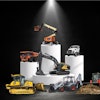

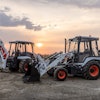
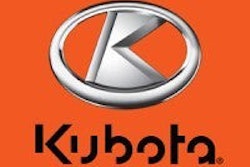
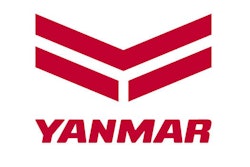
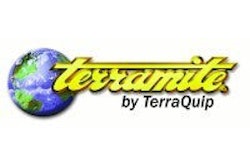

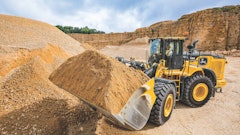


![Renegade 3[1]](https://img.forconstructionpros.com/mindful/acbm/workspaces/default/uploads/2025/07/renegade-31.F6zKAsOB3b.jpg?ar=16%3A9&auto=format%2Ccompress&fit=crop&h=135&q=70&w=240)


